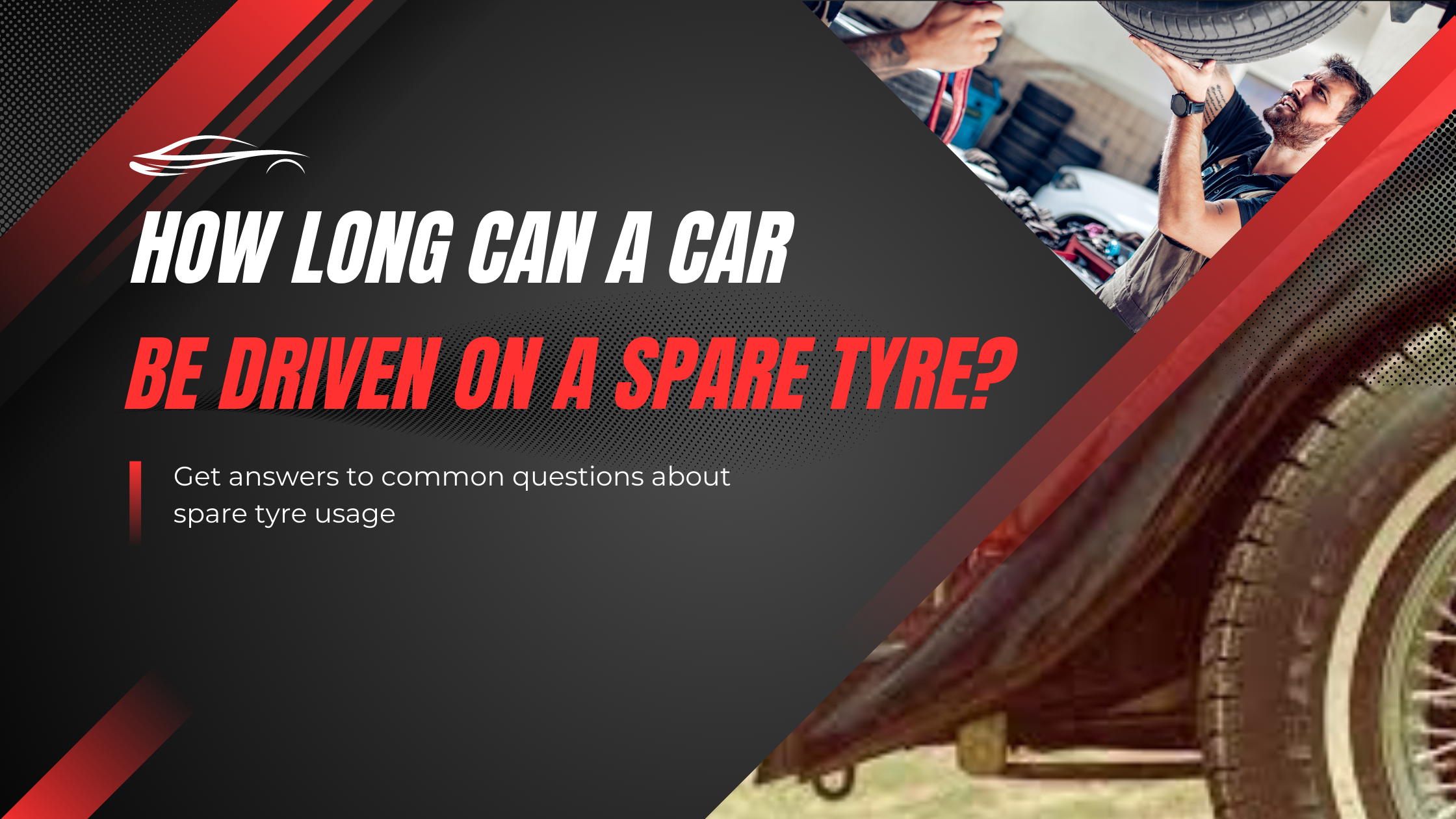Your automobile or truck’s tires are made to handle miles of pavement, gravel, dirt, and various types of weather. You will, however, occasionally run over something that could result in a flat tire. How long can you drive after installing your spare tyre and still get to the tire shop safely after that happens? To help you drive safely, we have some tips regarding spare.
Understanding Spare Tyres
A spare tire is essentially an additional one kept in a car. Any running tire that goes flat gets punctured, or experiences any other emergency issues can be replaced by it. Almost all vehicles have a spare wheel that is attached and has a tire on it. Also, it is important to keep a spare wheel if you are on a long trip.
Lifespan of a Spare Tire
A common guideline is to replace your tire with a new tire after driving no more than 70 miles and at no more than 50 miles per hour. The primary reason you should avoid using space-saver or donut tires for an extended period of time is that they have little to no tread, leaving the spare tire vulnerable to obstacles on the road and projectiles.
It’s significantly smaller than the other three tires, so it spins faster to keep up with the speeding car.
Factors That Affect the Lifespan
Below are some factors that affect a tire’s lifespan:
Age
Tires usually last about ten years, whether they are spares or regular tires. This depends on the climate and how the car is stored, but the spare tire should be changed after ten years.
Type of Tyre
Full-size spares are the same as your regular tires and generally last as long as your normal ones. On the other hand, compact spares are smaller and not as strong, which means they might only last for a short time.
Driving Conditions
When you drive on a spare tire in rough weather, like extreme heat or cold, it can wear out faster. Also, it’s important to keep an eye on the state of the spare tyre if you’re driving on rough terrain or at high speeds.
Distance Driven
It is recommended to drive as little as possible on this tire. The maximum distance a space saver can travel differs from manufacturer to manufacturer. On average, you can use the spare tire for 50 or even 70 miles.
Tips for Driving on a Spare Tyre
When going on a spare tire, make sure to remember the following:
Lower Your Speed
After putting on your temporary spare tire, which should be inflated to 60 psi, slow down while driving on the odd-sized tire. Most tire makers say that you shouldn’t go faster than 50 mph.
Know The Affected System
After putting on a donut spare, the wheel-speed monitor may notice the difference and turn on your dashboard’s brake and ABS (anti-lock braking system) warning lights. This happens because your small spare may have to turn faster than the other tires to keep up, and the sensors pick up on this as a problem.
Your Spare Must be Roadworthy.
The majority of us probably won’t ever need to use our spare tire. But picture being in that situation and finding out that your tire is flat or broken. Because of this, it’s important to keep an eye on the state of your spare tire and not let it go “out of sight, out of mind.”
Checking the pressure, tread depth, and state of your tires once in a while is a quick job that could save you a lot of time, money, and hassle in the future.
What Happens If You Drive for Too Long on a Spare?
Driving on a spare tyre for a long time might do major harm to your vehicle. Spare tires aren’t made to be used for a long time and can mess up your car’s balance, suspension, and safety in general.
Also, if you keep driving on these tires, it can wear out quickly and become unsafe, which puts you and other cars in danger.
Conclusion
Just in case you were wondering, you can pick up a spare at any store that also sells ordinary tires. PitStopArabia recommends that automobile owners should keep a spare tire on hand and check on a regular basis.
By following the tips outlined in this article, you can safely drive on a spare tyre and avoid potential damage to your vehicle.





